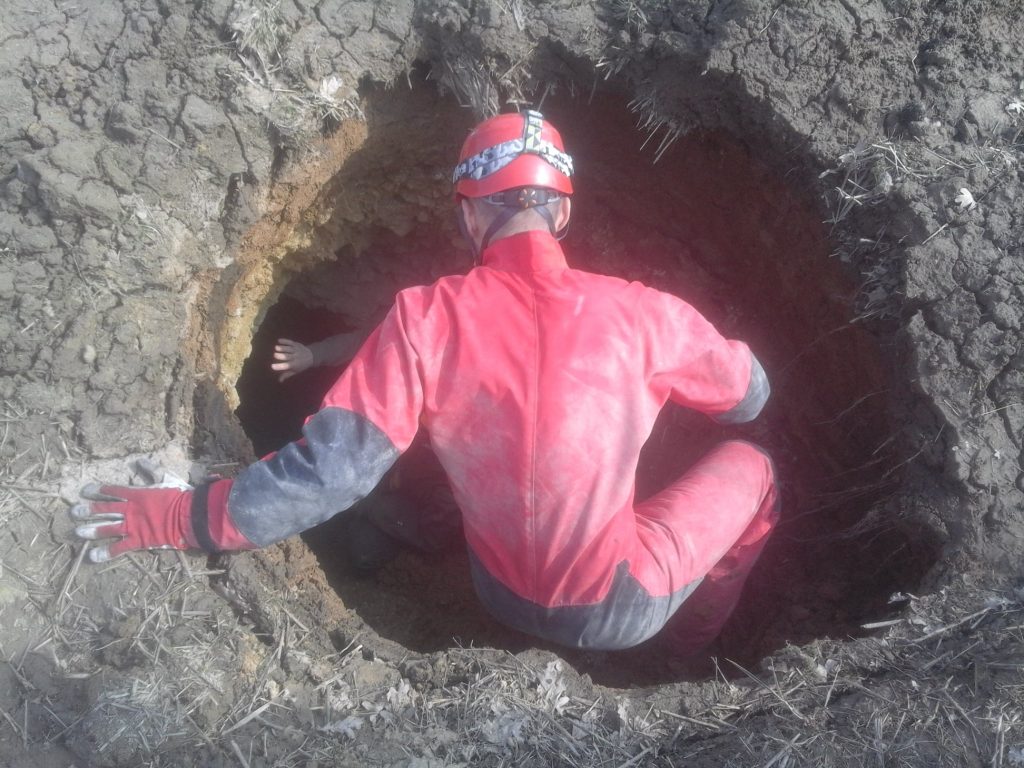Joseph Conrad Farmer finds Ice Age cave over 11,000 years old hidden under his field


A farmer has uncovered a naturally-formed cave which was used by humans during the Ice Age.
Adam Bryczek had been roaming his land near the town of Kraśnik in south-eastern Poland, when he came across what appeared to be a large hole.

 What had originally been a small opening in the ground, had widened over time, before ultimately collapsing to reveal an entrance to the cave.
What had originally been a small opening in the ground, had widened over time, before ultimately collapsing to reveal an entrance to the cave.
But what had originally been a small opening in the ground, had widened over time, before ultimately collapsing.
Startled Bryczek found the opening led down around 10 metres into an underground cave with an area of a few dozen square metres and a maximum height of up to around 140 cm – not enough for most adults to stand upright.
Bryczek reported his find to Dominik Szulc, the guardian of monuments in Kraśnik County, in January.
 The underground space appears to be a solutional cave, which means that it was formed by the bedrock being dissolved by groundwater.
The underground space appears to be a solutional cave, which means that it was formed by the bedrock being dissolved by groundwater.
Since then, the site has been visited by archeologists from Lublin, the capital of the region.
The underground space appears to be a solutional cave, which means that it was formed by the bedrock being dissolved by groundwater.
 Dominik Szulc, guardian of monuments in Kraśnik County, said: “The cave undoubtedly dates back to the Pleistocene (2.58 million – 11,700 years ago), and more precisely, perhaps the so-called glaciations of the Nida or San (730,000-430,000 years ago).”
Dominik Szulc, guardian of monuments in Kraśnik County, said: “The cave undoubtedly dates back to the Pleistocene (2.58 million – 11,700 years ago), and more precisely, perhaps the so-called glaciations of the Nida or San (730,000-430,000 years ago).”
According to Szulc: “The cave undoubtedly dates back to the Pleistocene (2.58 million – 11,700 years ago), and more precisely, perhaps the so-called glaciations of the Nida or San (730,000-430,000 years ago).”
During this period, a Scandinavian ice sheet covered the Lublin Upland and the local area was covered by a thick layer of snow, he explains.
During temporary increases in temperature, there was a lot of flowing water, which dissolved the limestone rock, forming the walls, floor and ceiling of the cave.
 Farmer Adam Bryczek had been roaming his land near the town of Kraśnik in south-eastern Poland, when he came across what appeared to be a large hole.
Farmer Adam Bryczek had been roaming his land near the town of Kraśnik in south-eastern Poland, when he came across what appeared to be a large hole.
Even though the cave formed naturally, the researchers point out that it was visited by humans, apparently to extract stone for building.
The cave’s walls show traces of mechanical work left by tools.
In a post on Facebook, Szulc did not publish the cave’s exact location, warning that it could be dangerous.
 Even though the cave formed naturally, the researchers point out that it was visited by humans, apparently to extract stone for building.
Even though the cave formed naturally, the researchers point out that it was visited by humans, apparently to extract stone for building.
He wrote: “It is not suitable for access to visitors, because it is too small and low, with a steep and dangerous entrance leading to it.”
Experts are now working on a way to secure the cave so that people can enter it again to conduct scientific research.
